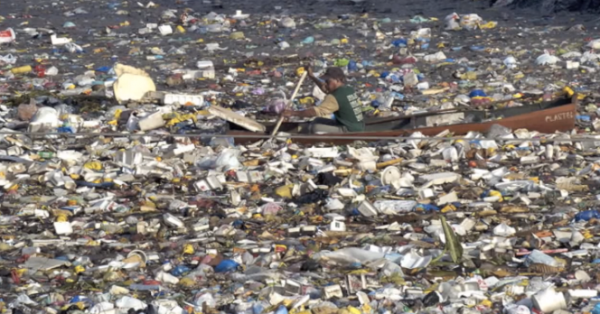By Christina Spark, | April 11, 2017

About 70 percent of the entire waste in these areas are plastic, with micro plastics being particularly prevalent. (YouTube)
Over the years, it has been established just how cruel humans are as a whole, at least when it comes to ocean waste. However, what has not been specified, is just how much non-biodegradable plastic waste humans have deposited in the oceans. Now, a new study has answered that question.
Research Studies On Ocean Wastes
Litterbase, alongside its accompanying maps, draws on data from a series of studies conducted in the past 50 years. The studies reveal that the most polluted aquatic spots include patches of sea and beaches off the coasts of Jordan and South Korea. These places are hosts to more than 10 billion pieces of waste per square kilometer. Most of the litters in these areas are plastics.
Like Us on Facebook
Ocean Litter Largely Comprised By Plastic
About 70 percent of the entire waste in these areas are plastic, with micro plastics being particularly prevalent. Micro plastics are remains of plastics that are less than five millimeters in size. These objects break down due to different factors such as currents and sunlight. Apart from the plastic waste in the oceans, metal, and glass materials were also found in the areas. These materials contribute to the remaining 30 percent of the ocean litter.
Effects Of Plastic Wastes On Marine Life
As to the effects of human-caused ocean wastes to the marine life, the studies revealed that sea creatures inevitably come in contact with the ocean litter, Science Mag reported. Over 1200 aquatic species are said to be affected by the wastes as the creatures eat them, live in them, or get entangled with them. These species include different kinds of fish, crustaceans, and aquatic mammals. Nevertheless, Litterbase says that ingestion is the most common type of marine life contact with plastic waste.
-
Use of Coronavirus Pandemic Drones Raises Privacy Concerns: Drones Spread Fear, Local Officials Say

-
Coronavirus Hampers The Delivery Of Lockheed Martin F-35 Stealth Fighters For 2020

-
Instagram Speeds Up Plans to Add Account Memorialization Feature Due to COVID-19 Deaths

-
NASA: Perseverance Plans to Bring 'Mars Rock' to Earth in 2031

-
600 Dead And 3,000 In The Hospital as Iranians Believed Drinking High-Concentrations of Alcohol Can Cure The Coronavirus

-
600 Dead And 3,000 In The Hospital as Iranians Believed Drinking High-Concentrations of Alcohol Can Cure The Coronavirus

-
COVID-19: Doctors, Nurses Use Virtual Reality to Learn New Skills in Treating Coronavirus Patients







